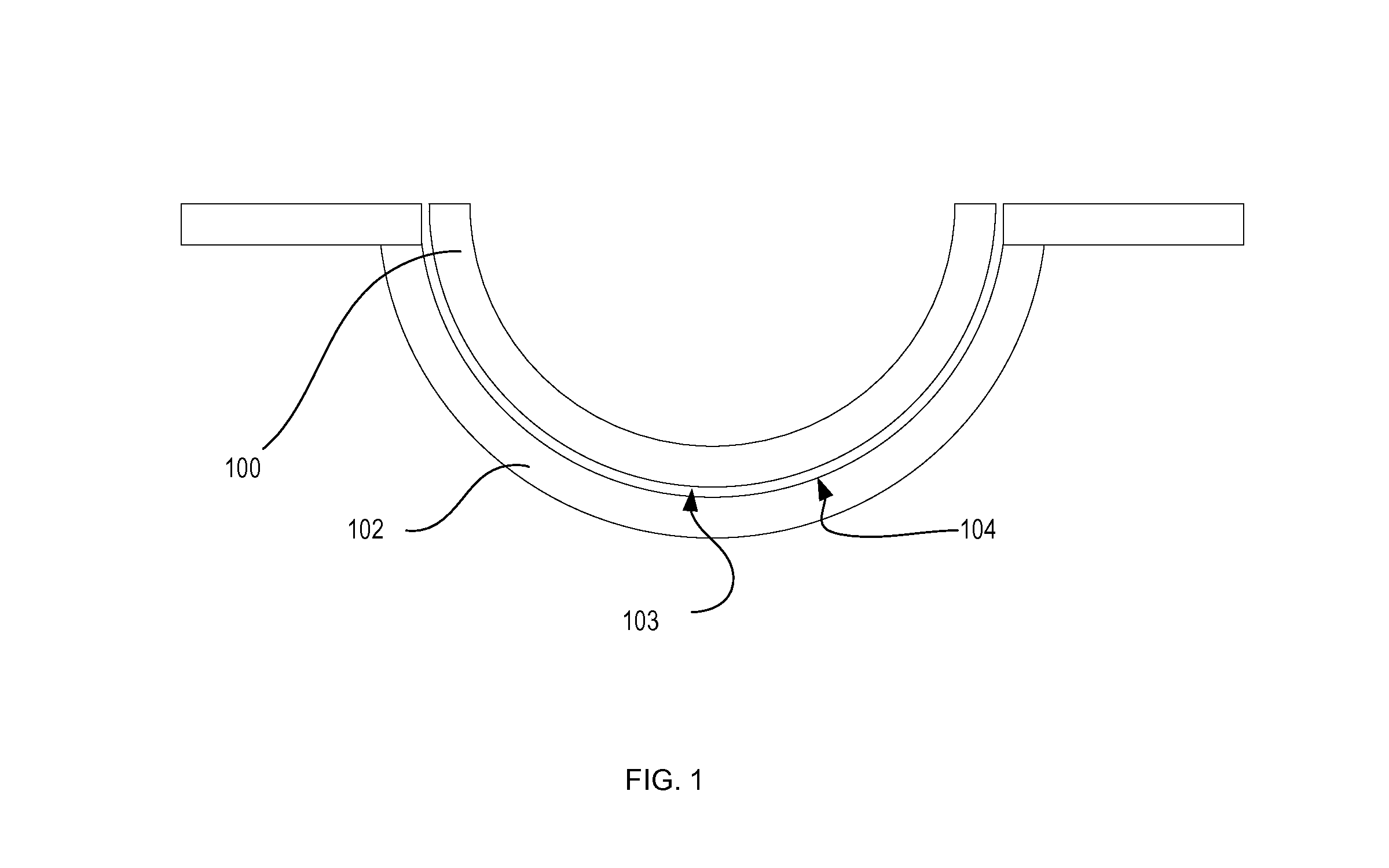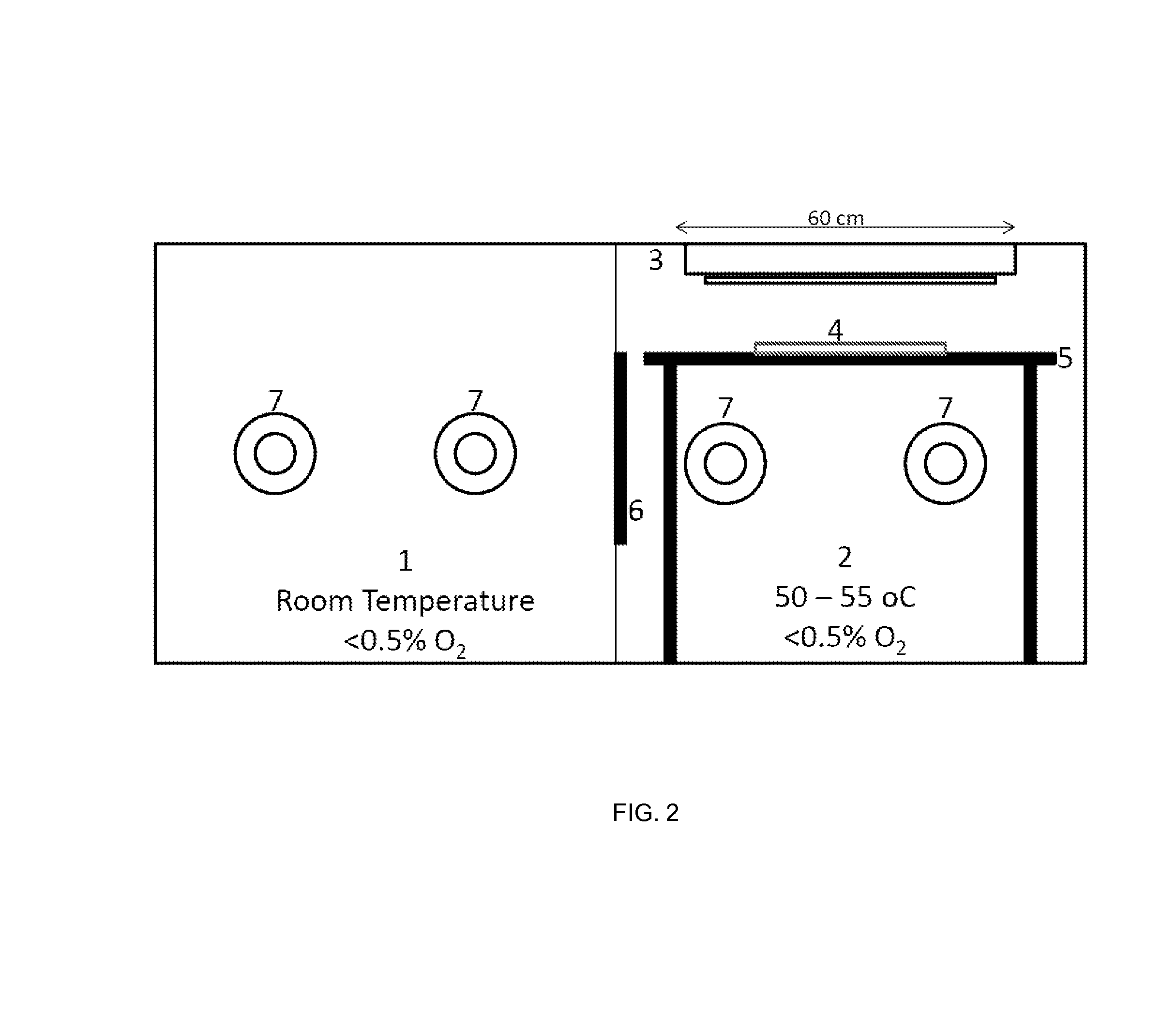Silicone hydrogels comprising n-vinyl amides and hydroxyalkyl (METH)acrylates or (METH)acrylamides
a technology of hydroxyalkyl acrylate and silicone hydrogel, which is applied in the direction of instruments, optical elements, optics, etc., can solve the problems of poor clarity, high modulus, and hampered initial efforts to make silicone hydrogel contact lenses, so as to prevent evaporation and dehydration and increase the thickness
- Summary
- Abstract
- Description
- Claims
- Application Information
AI Technical Summary
Benefits of technology
Problems solved by technology
Method used
Image
Examples
examples
[0205]The following abbreviations are used in the examples below:
FC Front mold curves
BC Back mold curves
SiMAA (3-methacryloxy-2-hydroxypropoxy)propyl-bis(trimethylsiloxy)methylsilane (Also known as SiGMA)
DMA N,N-dimethylacrylamide
[0206]HEMA 2-hydroxyethyl methacrylate
HEAA hydroxyethylacrylamide
HBMA 2-hydroxybutyl methacrylate, prepared as in Synthetic Example 1
HPMA 2-hydroxypropyl methacrylate (ACROS)
DMHEMA dimethylhydroxyethylmethacrylate, prepared as in Synthetic
example 2
[0207]mPDMS 800-1000 MW (Mn) monomethacryloxypropyl terminated mono-n-butyl terminated polydimethylsiloxane
OH-mPDMS α-(2-hydroxy-1-methacryloxypropyloxypropyl)-ω-butyl-decamethylpentasiloxane, (MW 612g / mol), prepared as in Example 8 of US20100249356 A1
Norbloc 2-(2′-hydroxy-5-methacrylyloxyethylphenyl)-2H-benzotriazole
D3O 3,7-dimethyl-3-octanol
TAC triallylcyanurate
TEGDMA tetraethyleneglycol dimethacrylate
TRIS 3-methacryloxypropyltris(trimethylsiloxy)silane
acPDMS bis-3-methacryloxy-2-hydroxypropyloxypropyl
polydimethylsiloxane (MW about 1000 g / mole)
CGI 819 bis(2,4,6-trimethylbenzoyl)-phenylphosphineoxide
EtOAc ethyl acetate
Macromer III Described in Example 25 of U.S. Pat. No. 6,943,203
GMMA 2,3-dihydroxypropyl methacrylate
TAA t-amyl alcohol
ETOH ethanol
SA-2 N-(2,3-dihydroxypropane)-N′-(propyl tetra(dimethylsiloxy) dimethylbutylsilane)acrylamide, as shown in Formula XI
NVP N-vinylpyrrolidone
[0208]BHT butylated hydroxytoluene
PVP poly(N-vinylpyrrolidone)
EG...
example synthetic example 4
and prepared in Example Synthetic Example 4
BAE (Boric Acid Ester) was formed as follows:
[0209]1.24 parts of a 5% (wt) solution of ethylenediaminetetraacetic acid, 299 parts (wt) glycerol and 100 parts (wt) boric acid were added to a reaction flask. The mixture was heated with stirring to 90° C. Vacuum was applied to reduce the pressure to less than 6 torr as the mixture was stirred for 155 minutes, with removal of water vapor. The pressure was reduced to less than 2 torr and the reaction was continued for 2 hours, or longer as needed until the % water of the mixture was reduced to less than 0.2% using a Karl Fischer test.
BAGE (Boric Acid Glycerol Ester) was formed as follows:
[0210]To BAE prepared as described above was added 624 parts (wt) glycerol with stirring for 60 minutes at 35-40° C.
PUM
| Property | Measurement | Unit |
|---|---|---|
| wt % | aaaaa | aaaaa |
| molar ratio | aaaaa | aaaaa |
| wt % | aaaaa | aaaaa |
Abstract
Description
Claims
Application Information
 Login to View More
Login to View More - R&D
- Intellectual Property
- Life Sciences
- Materials
- Tech Scout
- Unparalleled Data Quality
- Higher Quality Content
- 60% Fewer Hallucinations
Browse by: Latest US Patents, China's latest patents, Technical Efficacy Thesaurus, Application Domain, Technology Topic, Popular Technical Reports.
© 2025 PatSnap. All rights reserved.Legal|Privacy policy|Modern Slavery Act Transparency Statement|Sitemap|About US| Contact US: help@patsnap.com



